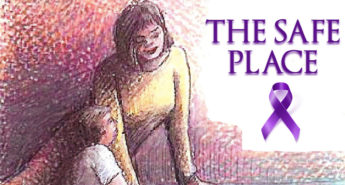 In a world where violence seems to be around every corner of society, building a community against violence has never been more critical. The task, though daunting, is not impossible. It requires effort, understanding, and dedication to creating a safer, more peaceful community for all. Here’s how this can be achieved and what we can all do to help in this effort.
In a world where violence seems to be around every corner of society, building a community against violence has never been more critical. The task, though daunting, is not impossible. It requires effort, understanding, and dedication to creating a safer, more peaceful community for all. Here’s how this can be achieved and what we can all do to help in this effort.
The first step in creating a community against violence is understanding its roots. Violence often comes from a complex mix of factors, including poverty, lack of education, unresolved personal trauma, and cultural influences. By addressing these underlying issues, we can begin to prevent violence before it starts.
Education is a powerful tool in the fight against violence. Communities need educational programs that promote empathy, conflict resolution, and effective communication from a young age. Schools, community centers, and local organizations can offer workshops and seminars that teach individuals how to manage anger, handle disputes peacefully, and recognize the signs of escalating conflict.
Awareness campaigns are also crucial. These can highlight the impact of violence on individuals and communities, promoting a culture of zero tolerance. Social media, local events, and partnerships with influential community figures can amplify these messages, ensuring they reach a broad audience.
Creating a support system is essential for individuals affected by violence. This includes accessible mental health services, counseling, and hotlines for those in crisis. Community centers should offer safe spaces where individuals can seek help without fear of judgment or reprisal.
Support groups for victims of violence can provide a sense of solidarity and understanding, helping individuals to heal and rebuild their lives. Training community members to recognize and respond to signs of abuse or violence can also be a game-changer, ensuring timely intervention and support.
Empowering community members to take an active role in violence prevention is key. This can be achieved through neighborhood watch programs, community policing initiatives, and volunteer opportunities that promote safety and unity.
Regular community meetings can provide a platform for residents to voice their concerns, share ideas, and collaborate on solutions. Engaging local leaders, religious institutions, and businesses in these efforts can enhance their reach and effectiveness.
Advocating for policies that address the root causes of violence is another critical component. This includes pushing for legislation that tackles poverty, improves access to education, and strengthens mental health resources. Communities can organize petitions, rallies, and meetings with policymakers to ensure their voices are heard and their needs addressed.
Strong, positive relationships within the community act as a deterrent to violence. Events that help social togetherness, such as community festivals, sports leagues, and cultural events, can help build these connections. When people know and care about their neighbors, they are more likely to look out for one another and work together to maintain a peaceful environment.
Each of us has a role to play in creating a violence-free community. This means examining our own behaviors and attitudes, challenging stereotypes and prejudices, and standing up against injustice. By modeling nonviolent behavior and promoting kindness and respect, we can inspire others to do the same.
Building a community against violence is an effort that requires the commitment and collaboration of every member. Through education, support systems, community engagement, policy advocacy, and personal responsibility, we can create a safer, more peaceful society. It starts with understanding and addressing the root causes of violence, fostering strong relationships, and empowering individuals to make a difference. Together, we can turn the tide against violence and build a community where everyone feels safe and valued.




Leave a Reply